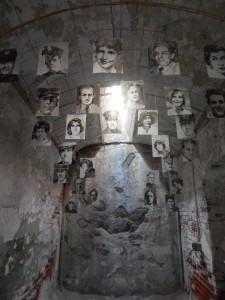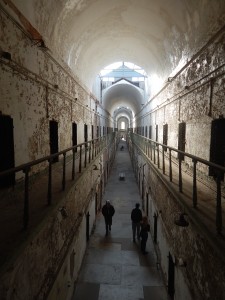From the Carter reading on Silences, I was intrigued by the term “total archives” (216) in reference to Canada’s practice of documenting the historical development and all segments of a community by acquiring both official administrative records as well as related personal papers and corporate records (http://www2.archivists.org/glossary/terms/t/total-archives). The practice emphasizes collecting a wide range of materials, including architectural drawings, maps, microfilm, and other documentary forms. (archivists.org) I wonder if in addition to make archives more inclusive and all encompassing, it is also important to note that archives are not neutral spaces without vested interests (Carter, 216) nor are they apolitical (Springer). Perhaps the format of the archive can reflect this political nature rather than only trying to work against it. Additionally, the concept of “total archives” is interesting because, as Carter states “the records in the archives tell a very small part of a much larger and infinitely complex story.” Therefore, not only do archives consciously exclude narratives, there are also narratives that will never be told because of the nature of archives not being able to tell the whole and complex story.
I am reminded of our discussion about differentiating “the past” with “history” and how these words carry with them different connotations. “The past” is assumed to be more personal and less factual perhaps whereas “history” carries with it an assumption of high accuracy and credibility, often based in what is available in archives. The concept of history as imagination reminded of a project I worked on in a high school history class comparing Sofia Coppola’s Marie Antoinette to scholarly articles and books that we had read about Marie Antionette geared at an academic audience. The prompt was something like “Which of these two types of narratives gives a more accurate portrait of this historical figure. Choose one and defend it.” The purpose of the assignment was to examine our prejudices toward “higher” forms of history telling and to understand that neither very well evidenced histories nor fictionalized stories can tell a full version of a person.
I think this is relevant to working with the Bryn Mawr Archives because we are dealing with a collection of personal histories of people who have been connected to the college. Working with archival materials, there is only so much that you can gleam, because people don’t always say what they mean nor are they producing or saving items thinking that their materials will end up in an archive. I am reminded of the readings that we had about first students, particularly Linda Perkins’ The African American Female Elite: The Early History of African American Women in the Seven Sister Colleges, 1880-1960. In the article, the letters that were used as evidence to support specific claims about opinions about African American Women, but often I felt it was difficult to believe certain understandings of the feelings of students given the evidence presented.
On a separate note, the formatting of the archival space intrigues me. In the example of the Collection Development Policy of the John J. Wilcox Archives of the William Way LGBT Community Center, some of the divisions in the formats of material seems hard to differentiate. For example, where is the division made between “Artwork” and “Artifacts and Objects” and why? What is the purpose of these divisions and are there archives organizing their material in other formats?



